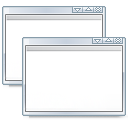 A recent study by IBM User Interface Researchers at San Jose analyzed the effectiveness of various automated graphs in understanding data. In the paper, “Understanding Users’ Comprehension and Preferences for Composing Information Visualizations,” researchers used crowdsourcing to study how well individuals can answer statistical questions, given a type of graph.
A recent study by IBM User Interface Researchers at San Jose analyzed the effectiveness of various automated graphs in understanding data. In the paper, “Understanding Users’ Comprehension and Preferences for Composing Information Visualizations,” researchers used crowdsourcing to study how well individuals can answer statistical questions, given a type of graph.
Continue reading
Monthly Archives: July 2014
Elements of Enterprise-Grade Web Frameworks – Part 4: N-depth Parent-child relationships
 Parent-child relationships are the heart of most enterprise apps – enabling them to enumerate the hierarchical relationships present in most business processes. Every web framework needs to support parent-child relationships, however the key to a platform’s flexibility and usability is the amount of overhead involved in the implementation.
Parent-child relationships are the heart of most enterprise apps – enabling them to enumerate the hierarchical relationships present in most business processes. Every web framework needs to support parent-child relationships, however the key to a platform’s flexibility and usability is the amount of overhead involved in the implementation.
Continue reading
Elements of an Enterprise-Grade Web Framework – Part 3: Data-Bound Drop-downs
 Drop-down list-of-values populated by database tables are another important component of enterprise-grade web frameworks. Although most frameworks do support them through one technique or other, the ease of implementation is key in this often-used feature.
Drop-down list-of-values populated by database tables are another important component of enterprise-grade web frameworks. Although most frameworks do support them through one technique or other, the ease of implementation is key in this often-used feature.
Continue reading
Elements of an Enterprise-Grade Web Framework – Part 2: Existing Database Schemas
 A powerful database schema is one of the key components of an enterprise application. Using the database to enforce business logic and ensure data integrity enables both flexibility and scalability in application design. By coding business logic in both the database layer and application layer, the database has the flexibility to then also be used by other applications and processes without fear of corrupting data. In addition, other systems can take advantage of stored procedures or views that make future development easier, instead of the platform lock-in created by storing all business logic in the application itself.
A powerful database schema is one of the key components of an enterprise application. Using the database to enforce business logic and ensure data integrity enables both flexibility and scalability in application design. By coding business logic in both the database layer and application layer, the database has the flexibility to then also be used by other applications and processes without fear of corrupting data. In addition, other systems can take advantage of stored procedures or views that make future development easier, instead of the platform lock-in created by storing all business logic in the application itself.
Continue reading
Elements of an Enterprise-Grade Web Framework – Part 1
 While web frameworks are a dime a dozen in every language, from Rails to Sinatra to Django to ASP.NET/MVC, there are relatively few that inherently combine the features, flexibility, and scalability that enable successful development of enterprise applications. There is a fine line between ease of development and the capability to easily customize the software to fit an existing infrastructure or development environment, and a business-grade framework must tread that line masterfully.
While web frameworks are a dime a dozen in every language, from Rails to Sinatra to Django to ASP.NET/MVC, there are relatively few that inherently combine the features, flexibility, and scalability that enable successful development of enterprise applications. There is a fine line between ease of development and the capability to easily customize the software to fit an existing infrastructure or development environment, and a business-grade framework must tread that line masterfully.
Continue reading
The Museum of the Future – Interactive Mobile Drama
 A research project at the Hecht Museum in Israel highlights new techniques to increase visitor interaction and engagement. Presented in the paper, “Mobile Drama in an Instrumented Museum,” University of Haifa researchers developed a mobile app that augments museum exhibits, taking the concept of the audio tour to a completely new level.
A research project at the Hecht Museum in Israel highlights new techniques to increase visitor interaction and engagement. Presented in the paper, “Mobile Drama in an Instrumented Museum,” University of Haifa researchers developed a mobile app that augments museum exhibits, taking the concept of the audio tour to a completely new level.
Continue reading
Recovering from a Missing SVN Revision
 While Subversion can be a stable workhorse as a centralized source control repository, it can be a challenge to fix it if one of the revision files has gone awry. In this example, we’ll go through recovering from a crashed Windows SVN server, where one or more of the revision files might have been lost during the restore operation.
While Subversion can be a stable workhorse as a centralized source control repository, it can be a challenge to fix it if one of the revision files has gone awry. In this example, we’ll go through recovering from a crashed Windows SVN server, where one or more of the revision files might have been lost during the restore operation.
Continue reading
jQuery FancyBox – Don’t Scroll While Editing a Textbox
 The FancyBox component offers an elegant, free and open-source in-line pop-up window, based on the jQuery JavaScript platform. With its streamlined design and shadow effects, it competes with ColorBox as the top successor to LightBox. Its breadth of features and configuration options enable fine-grained customization, and its simplicity makes it easier to perform advanced code edits as necessary.
The FancyBox component offers an elegant, free and open-source in-line pop-up window, based on the jQuery JavaScript platform. With its streamlined design and shadow effects, it competes with ColorBox as the top successor to LightBox. Its breadth of features and configuration options enable fine-grained customization, and its simplicity makes it easier to perform advanced code edits as necessary.
Continue reading
Downloading Websites with WinHTTrack
 An excellent open source tool called WinHTTrack enables downloading websites for archiving, backups, and analysis. When direct access to a website is not available, this tool can be very useful for creating an offline backup or archive before a replacement website is taken live.
An excellent open source tool called WinHTTrack enables downloading websites for archiving, backups, and analysis. When direct access to a website is not available, this tool can be very useful for creating an offline backup or archive before a replacement website is taken live.
There are three primary use cases for WinHTTrack: creating a backup of an old site before it is moved to a new host, archiving a useful website for offline use, or downloading a full offline version of a website for semantic analysis. With its plethora of options, WinHTTrack adapts itself easily to each situation.
Continue reading
Multi-touch Wall Displays – How Close Will We Get at Work?
 Scientists at the University of Copenhagen are bringing multi-touch wall-sized displays back into the limelight with their recent publication “Proximity and Physical Navigation in Collaborative Work With a Multi-Touch Wall-Display.” The focus of the study is to analyze how groups of people use the displays to solve analytical problems. While significant work has been done in analyzing table-top displays, wall-displays are a relatively new horizon.
Scientists at the University of Copenhagen are bringing multi-touch wall-sized displays back into the limelight with their recent publication “Proximity and Physical Navigation in Collaborative Work With a Multi-Touch Wall-Display.” The focus of the study is to analyze how groups of people use the displays to solve analytical problems. While significant work has been done in analyzing table-top displays, wall-displays are a relatively new horizon.
Continue reading







